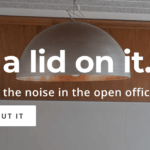Do you know what’s wrong with your building product? Do you know the real or perceived concerns that customers have about it or your company?
When I ask builders, contractors or architects why they chose not to use a different building product, they almost always tell me two things.
1. In their minds, the product you just presented to them is probably better than the one they are using. They may believe this simply because it has been a while since they were reminded of why the product (or company) they are using was so good.
How often do you treat an existing customer as if they were a new one and remind them of why you are the better choice? Most companies wait until it is too late and only act when their customer is considering a change.
2. When the builder, contractor, or architect doesn’t switch, it’s most often because the salesperson doesn’t address the concerns they have. That concern may be real, or it may just be perceived. It may be true, or it may be false.
It may be based on a past experience, something they have read, or something they have been told.
But one thing is for sure, these concerns are always there. The human mind is designed to protect us from making mistakes, so it spends more time looking for what’s wrong than what’s right. It usually won’t stop until it finds something to worry about.
Whether it’s in a sales presentation, at a trade show, or on their website, most companies ignore or avoid the “what’s to worry about” message.
Most companies know what these concerns are but choose not to address them, assuming they are not on the customer’s mind.
It’s like they think if they play “Hear no evil. See no evil. Speak no evil.” that they won’t have to deal with those bad things.
They’re usually wrong. And having the confidence to openly address these concerns will improve your sales.
Go Ahead and Deal with Problems
“Yes, our product costs more. But here’s why that makes it a better solution for you.”
“You may have heard that we’ve had some problems. Here’s what they were and here’s how we have addressed them.”
“Some people are claiming that our product or company has this problem. Let me give you the facts.”
“You may be concerned about changes in installation. Here’s why this won’t be a problem.”
When you don’t deal with these up front, you risk losing the sale in two ways.
1. The person you are presenting to has these concerns in mind but doesn’t bring them up.
2. The person you are presenting to is interested in your product but when they tell other people in their organization that they’re considering using it, they learn about all the (rumored or actual) problems with it and wonder why you didn’t bring them up.
It’s natural to want to talk up the product and present it in the best light. But if you want to maximize your sales, it can be just as important to know about and address what is wrong with it as it is to promote what is right.
Subscribe To My Newsletter
If you like what I say, sign up for my newsletter here and get my weekly newsletter every Sunday night.









